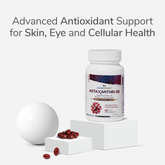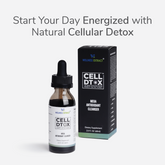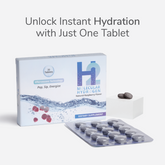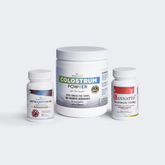Estimated Reading Time: 6 minutes
|You’ve probably heard people say they’re taking “Vitamin D,” but then the label says “D3.” Confusing, right? It’s a small detail that throws a lot of people off.
Whether you’re choosing a supplement, correcting a deficiency, or just curious about what your body really needs, understanding the difference in the vitamin D vs D3 debate can make a big impact.
So, let’s break down the real difference between vitamin D and D3.
First Things First: What Is Vitamin D?
Vitamin D is a fat-soluble vitamin that’s essential for several critical bodily functions. It helps your body absorb calcium and phosphorus—two minerals vital for strong bones and teeth. It also plays a role in:
-
Immune system regulation
-
Muscle function
-
Inflammatory response
-
Cardiovascular health
Interestingly, vitamin D is technically not a vitamin in the traditional sense—it behaves more like a hormone.
There are two main forms:
-
Vitamin D2
-
Vitamin D3
Now, this is where the real vitamin D vs D3 comparison begins to matter.
Vitamin D vs D3: The Big Difference
Here’s what separates Vitamin D2 from D3 at a glance:
|
Feature |
Vitamin D2 |
Vitamin D3 |
|
Also Called |
Ergocalciferol |
Cholecalciferol |
|
Source |
Plants & fungi (like mushrooms) |
Animal-based foods & sunlight |
|
Strength |
Less effective |
More effective |
|
Potency |
Less bioavailable |
More bioavailable (the body absorbs it better) |
|
Common in Supplements? |
Sometimes |
Most common |
Quick Tip:
If you’re buying a supplement and it says, “Vitamin D,” check the label for “cholecalciferol” — that means it’s Vitamin D3, the more effective form.
So… Is Vitamin D and D3 the Same?
Short answer? No.
Long answer? D3 is a type of Vitamin D.
The confusion mainly stems from labeling and marketing. Many supplements are labeled simply as “Vitamin D,” even when they contain D3. People assume they’re taking generic vitamin D, not knowing they’re actually consuming D3.
This distinction matters because:
- Vitamin D3 raises blood levels of vitamin D more effectively than D2.
-
It stays active in your system longer.
-
Research shows D3 may better support calcium absorption and bone health.
What Happens After You Take Vitamin D or D3?
Once you take either D2 or D3 (through food, sun, or supplements), your liver converts it to calcidiol—the form that’s measured in blood tests. Then, your kidneys turn it into calcitriol, the active form that your body uses.
This happens with both D2 and D3—but again, D3 tends to work more smoothly and effectively.
Did You Know?
The vitamin D blood test you get—called 25(OH)D—doesn’t tell you which type (D2 or D3) is in your system. It just shows your total D levels.
When are they Commonly Prescribed?
Most doctors recommend Vitamin D3 (cholecalciferol) for the following:
-
General deficiency
-
Bone health support
-
Post-menopause or elderly care
-
Muscle weakness
-
Fatigue due to low D levels
Sometimes, D2 is prescribed in high-dose medical situations, but that's usually temporary and under supervision.
Smart Buy Tip:
D3 is not just more effective — it’s also less likely to need frequent dosing.
Food Sources – D vs D3
Here’s where each type shows up naturally:
|
Source |
Contains |
Type |
|
Fortified milk & cereals |
D2 or D3 (check label) |
Varies |
|
Mushrooms (sun-dried) |
D2 |
Plant-based |
|
Fatty fish (salmon, mackerel) |
D3 |
Animal-based |
|
Egg yolks |
D3 |
Animal-based |
|
Liver |
D3 |
Animal-based |
|
Sun exposure (UVB rays) |
Stimulates skin to make D3 |
Natural |
Fun Fact:
Your skin makes Vitamin D3 naturally when exposed to sunlight. D2? You don’t make it at all — it’s only from plant sources or fortified foods.
Vegetarian or Vegan? What Are Your Options?
Most vitamin D3 supplements are derived from lanolin (a substance from sheep's wool), making them unsuitable for strict vegans. But there’s good news:
- Plant-based D3 supplements made from lichen are now widely available.
-
Vitamin D2 remains an alternative for those who prefer not to consume any animal-derived products—though it’s less effective.
So, Why Even Use D2?
Fair question. D2 still exists because:
- It’s cheaper to produce (especially in prescriptions)
-
It's used in fortified foods
-
Some prescription D2 doses are very high (like 50,000 IU) for short-term medical correction.
But again, in day-to-day supplements, D3 is usually the preferred choice for long-term use.
Myth Buster:
“If I spend time in the sun, I don’t need Vitamin D supplements.”
While sunlight does trigger Vitamin D3 production, age, sunscreen, location, and skin tone can all affect how much your body actually makes. In northern countries like Canada, winter sun often isn’t strong enough for sufficient D production.
Also Read: 10 Highly Inflammatory Foods to Avoid & 10 Anti-Inflammatory Foods to Include in Your Diet
How to Know If You’re Low on D?
Low vitamin D can show up as:
- Tiredness
-
Low immunity
-
Body aches or joint pain
-
Mood swings
-
Weak bones or hair loss
A 25-hydroxy vitamin D blood test can confirm your levels.
Levels That Matter:
Ideal level: 30–50 ng/mL
Below 20 = deficient
Below 10 = severely deficient
Who Might Need Extra Vitamin D3?
Some people need a little extra help getting enough D3—are you one of them?
-
Older adults (your skin produces less with age)
-
People living in northern climates
-
Those with darker skin tones
-
People who spend most time indoors
-
Vegans and vegetarians (less access to animal-based D3 sources)
Fun Fact:
Mushrooms are the only natural plant-based source of vitamin D—but only if they’re exposed to UV light. A portobello sunbath, anyone?
What’s the Bottom Line?
Understanding the difference between vitamin D vs vitamin D3 can help you make smarter choices for your health. While both forms technically “count” as Vitamin D, D3 is often the better option for maintaining healthy levels—especially if you’re not getting much sun or eating enough D-rich foods.
Want to make the most of your supplement routine? Look for high-quality Vitamin D3, and don’t forget to keep your magnesium levels in check, too.
Key Takeaways
- In the vitamin D vs vitamin D3 comparison, D3 is the most effective and commonly recommended form.
- Vitamin D2 is plant-based but less potent and less bioavailable.
- D3 is preferred for better absorption and longer-lasting effects.
- Check your supplement label for cholecalciferol—that’s D3.
- If you're unsure about your vitamin D status, ask your doctor for a simple blood test.
Disclaimer: This blog is for informational purposes only and does not provide medical advice. Always consult a healthcare professional before making changes to your diet or health routine. Individual results may vary.
References
1. Durrant LR, Bucca G, Hesketh A, et al. Vitamins D2 and D3 Have Overlapping But Different Effects on the Human Immune System Revealed Through Analysis of the Blood Transcriptome. Frontiers in Immunology. 2022;13. doi:https://doi.org/10.3389/fimmu.2022.790444 (Accessed on 2 july 2025)
2. Lehmann U, Hirche F, Stangl GI, Hinz K, Westphal S, Dierkes J. Bioavailability of vitamin D(2) and D(3) in healthy volunteers, a randomized placebo-controlled trial. The Journal of Clinical Endocrinology and Metabolism. 2013;98(11):4339-4345. doi:https://doi.org/10.1210/jc.2012-4287 (Accessed on 2 july 2025)
3. Fleet JC. Differences in the absorption and metabolism of vitamin D2, vitamin D3, and 25 hydroxyvitamin D. The Journal of Steroid Biochemistry and Molecular Biology. 2025;249:106718. doi:https://doi.org/10.1016/j.jsbmb.2025.106718 (Accessed on 2 july 2025)
4. Balachandar R, Pullakhandam R, Kulkarni B, Sachdev HS. Relative Efficacy of Vitamin D2 and Vitamin D3 in Improving Vitamin D Status: Systematic Review and Meta-Analysis. Nutrients. 2021;13(10):3328. doi:https://doi.org/10.3390/nu13103328
5. National Institutes of Health. Vitamin D. National Institutes of Health. Published 2024. https://ods.od.nih.gov/factsheets/VitaminD-HealthProfessional/
6. Bahrami A, Farjami Z, Ferns GA, Hanachi P, Mobarhan MG. Evaluation of the knowledge regarding vitamin D, and sunscreen use of female adolescents in Iran. BMC public health. 2021;21(1):2059. doi:https://doi.org/10.1186/s12889-021-12133-5
7. MedlinePlus. Vitamin D Deficiency. Medlineplus.gov. Published 2019. https://medlineplus.gov/vitaminddeficiency.html (Accessed on 2 july 2025)
8. Bechraki L, GHM E, CPGM L, Groenendijk I. The Nutritional Benefit of UV-Exposed Mushrooms for the Dutch Population: Modeling the Addition of UV-Exposed Mushrooms to the Diet. Current Developments in Nutrition. 2023;7(12):102039-102039. doi:https://doi.org/10.1016/j.cdnut.2023.102039













![Top 5 Best Vitamins for Men in Their 30s [Backed by Science!]](http://wellnessextract.com/cdn/shop/articles/Vitamin_for_men_8fe0fe21-19b1-4020-b895-dc104449637e_165x.webp?v=1765878148)
























